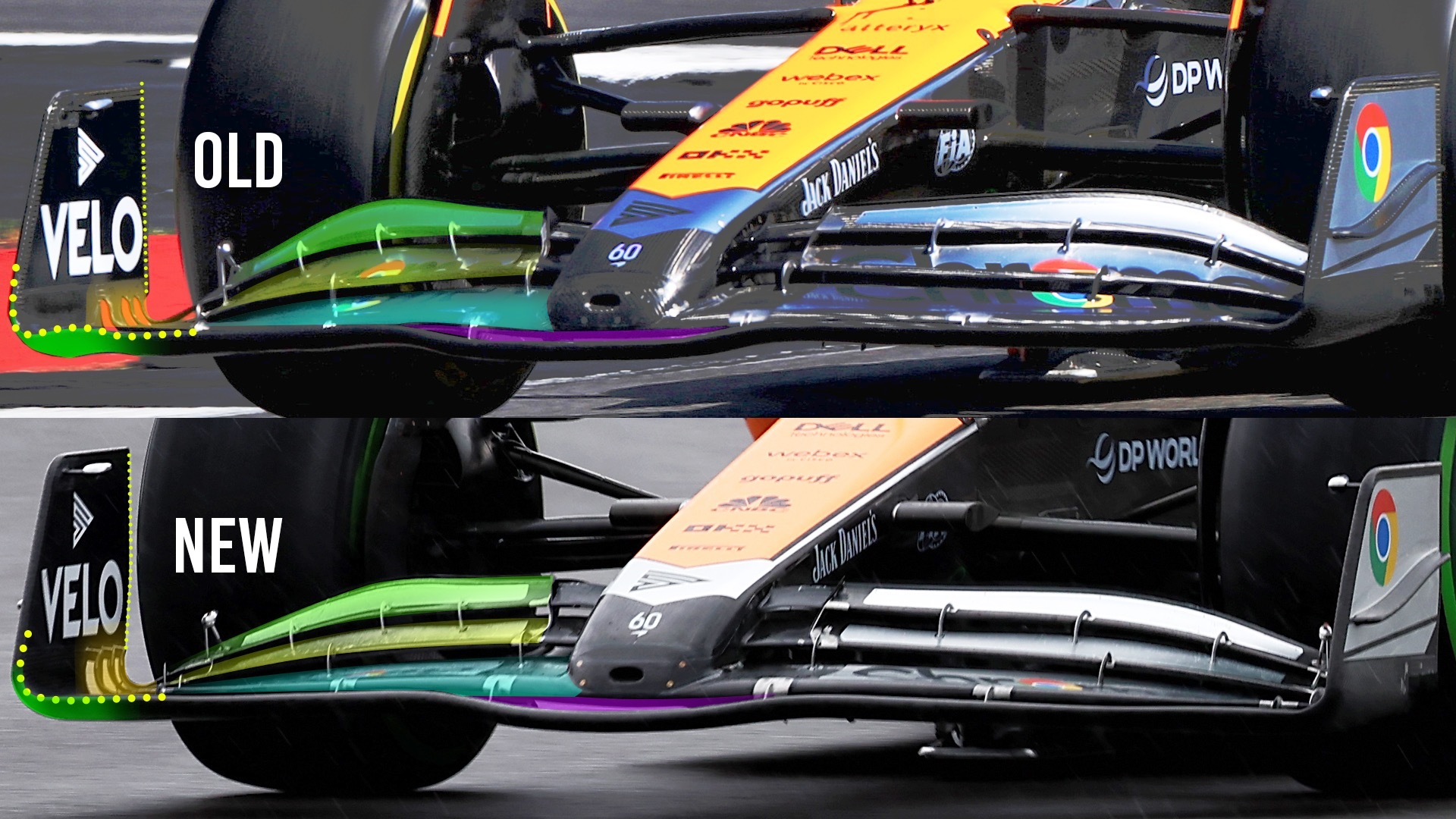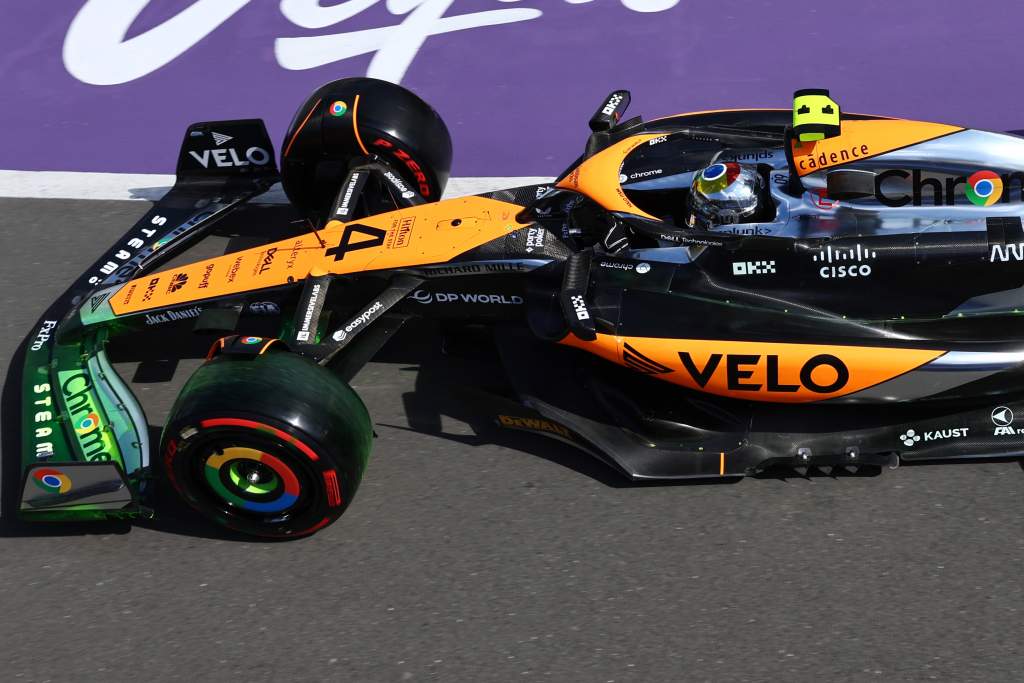Up Next

The thing that McLaren seems to have done is put the cart before the horse with its latest Formula 1 upgrade package.
By that I mean it got the main aerodynamic surfaces, including the sidepods and underfloor, developed and on the car for the previous race in Austria before introducing the new front wing at the British Grand Prix, which has improved the performance of all those previous developments slightly, on Lando Norris’s car with it arriving on team-mate Oscar Piastri’s car at the Hungarian GP.

The wing is nothing dramatic, but it does prove that there is more than one development direction in F1. Where Mercedes introduced a small tunnel at the outboard end, McLaren has eliminated it (yellow dotted line).
The trailing edge of the rear flap is also more uniform in its trim line (green shading). Yes, this will alter from circuit to circuit depending on the downforce levels, but if you have a good package around Silverstone – which is a ‘Mr Average Downforce’ circuit – it normally transfers fairly well to other circuits.
The central section of the front wing main plane (magenta highlight) looks narrower and with a less aggressive change of shape.
I have never been a fan of altering a wing profile aggressively as it generates crossflow and that can be different between the top surface, which has higher than ambient pressure on it, and the lower surface, which has lower than ambient pressure on it. So where this flow meets up at the trailing edge it can set up vortices. If you want them, fine, but you need to know about them and what other aero surfaces further rearward they are influencing.
It’s difficult to see in detail, but the nose itself does look a little less bulbous in the section where the front flaps run into it. Reducing this section means there is less overall flow displaced by the volume of the nose, meaning that the wing profiles can have more influence on the flow structure further rearward.



